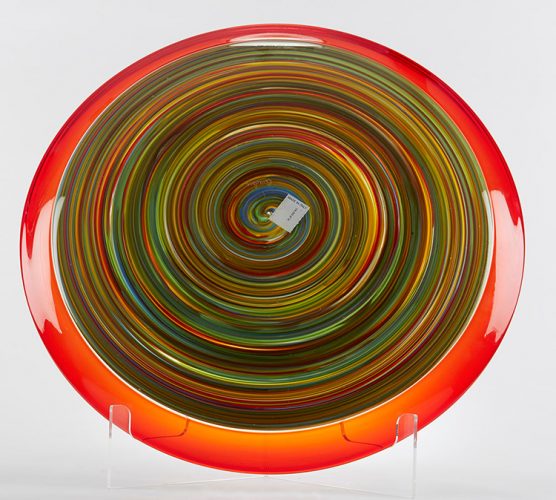The historic glass factories located on the Italian island of Murano (which has been a centre of glass-making since the Middle Ages) represent one of the last thriving bastions of Old World art glass, having survived both the ravages of World War 2 and the recent global recession.
Brands like De Biasi, Gabbiani, Venini, Salviati, Barovier & Toso, Pauly, Berengo Studio, Seguso, Formia International, Simone Cenedese, and Alessandro Mandruzzato are more than mere status symbols—they embody a living legacy of pride in craftsmanship and centuries of artistic innovation.
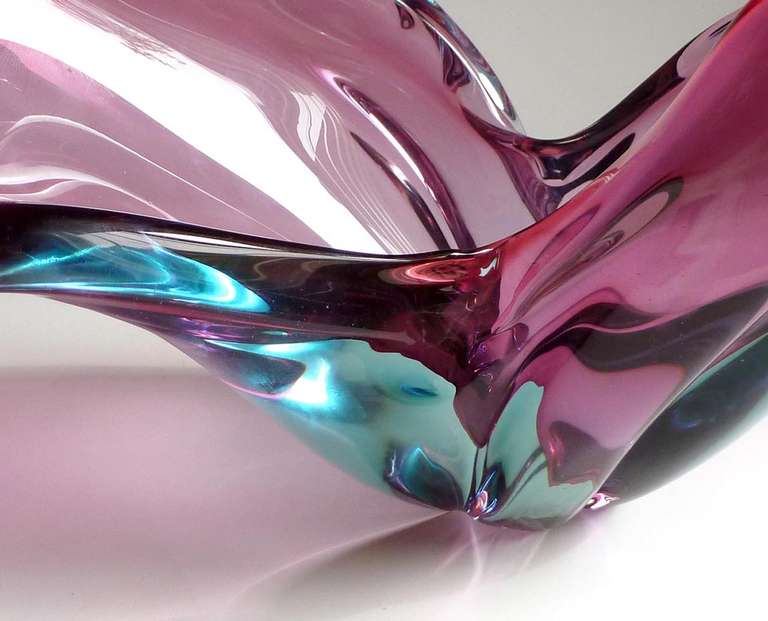
Unfortunately, this noble tradition is presently under threat, as demand for high-quality art glass has waned, the industry overall has been shrinking. Given the fact that art glass has never been a very profitable field—even many of the greats, such as Tiffany and Steuben, seldom made much money—any such lessening of demand is difficult to cope with. Likewise, imitation works of substandard quality from Asia and Eastern Europe now take an estimated 40% – 45% of the market away from Murano glass, as the common customer cannot easily differentiate between real Italian art glass and most knockoffs. Public tastes, too, are playing a role, Murano’s look remains classic, while buyer preferences tend to favour the trendy and contemporary. Due to this confluence of factors, the number of professional glassmakers in Murano is currently undergoing a sharp decline, sinking from about 6000 in 1990 to less than 1000 today.
In order to preserve what is left of this historic industry, Italian art glass enthusiasts might learn to identify imitations and refuse to purchase them. The first step in doing so is, of course, to look for the Murano trademark, which was developed by a group of companies and concerned Italian art glass enthusiasts in Murano to certify authenticity, and which is regulated by Region of Veneto Law no.70.
Only about 50 companies use the Artistic Glass Murano® trademark, however, as factories on the island are not required to apply it (and a number of them choose not to), so it’s also essential to cultivate one’s knowledge of the materials and techniques used by authentic Italian art glass makers, so that one might more easily spot fakes.
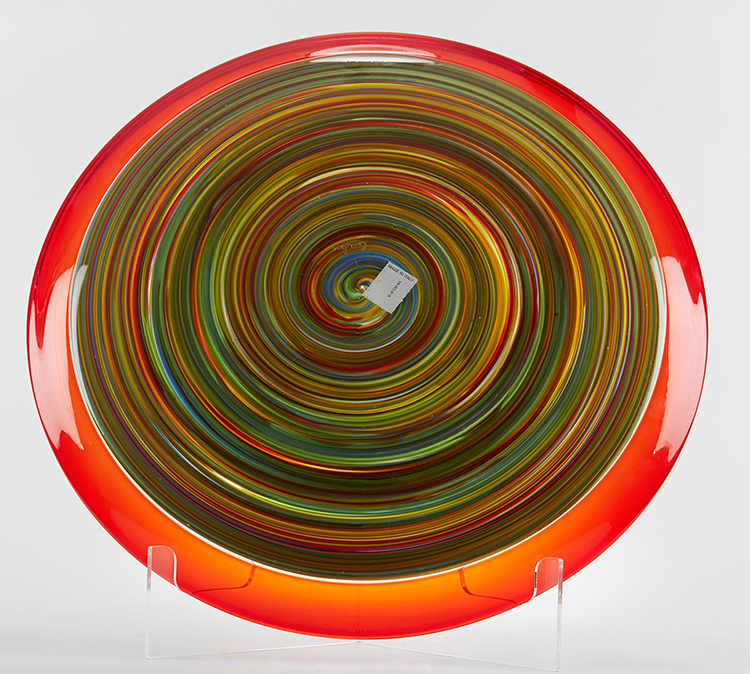
Materials
Murano glass is usually composed of 70% silica sand, with the other 30% of the glass being made up of other substances called “fluxes” and “stabilizers”. The purpose of the “flux” material is to allow the glass to be melted at a lower temperature, which is necessary for hand-working it (and which produces the bubble-free smooth composition Murano glass is famous for), and the presence of the “stabilizer” material prevents the glass from becoming soluble in water.
Murano glass usually contains a fair amount of the flux material sodium oxide, as this agent slows solidification, allowing the Italian artisans the time they need to carefully shape the softened glass by hand. Sodium is also often present, as it is used to make the glass surface opaque, as are nitrate and arsenic (used to further eliminate bubbles).
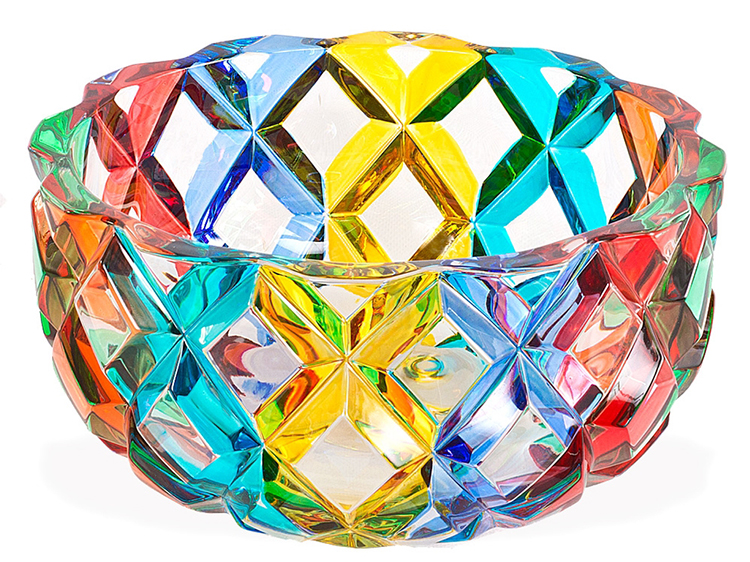
Colouring Techniques
Murano glass, in its basic composition, is clear and without colour. Coloured glass is achieved through the use of various minerals, oxides, and chemical derivatives which are added directly to the glass powder before it is melted. Aquamarine, for example, is created by the addition of copper and cobalt compounds into the glass powder, whereas ruby red is produced through the use of a gold solution.
The famous “Murrine” technique relies on the careful layering of coloured liquid glass, which is then stretched and worked into long rods known as “canes”, to be later sliced open to reveal a distinctive pattern. Millefiori, a type of Murrine technique, is more complicated still, with each layer of molten colour being precisely molded into a star shape before it is cooled and then layered yet again, eventually creating the “many-flowered” look from whence it gets its name (mille being “thousand” and “fiori” being “flowers” in Italian).
Murano glass artists are also renowned for pioneering the “Sommerso” (which means “submerged” in Italian), or “sunken glasses” technique, wherein distinctive layers of glass are formed through the act of dipping a “gather” of coloured glass into molten glass and then blowing the gather into the desired shape, so that—when the final product has cooled—the coloured glass is held within a “casing” of clear glass. Sommerso, which was developed in Murano during the late thirties and made popular by Seguso d’Arte in the fifties, was so wildly popular that Murano vases have since become an icon of mid-20th-century design aesthetic.
Murano glass artists also utilise Filigree (another variety of caneworking), glass engraving, gold engraving, incalmo, lattimo, painted enamel, and ribbed glass techniques to create the stunning range of pieces the region is known for.
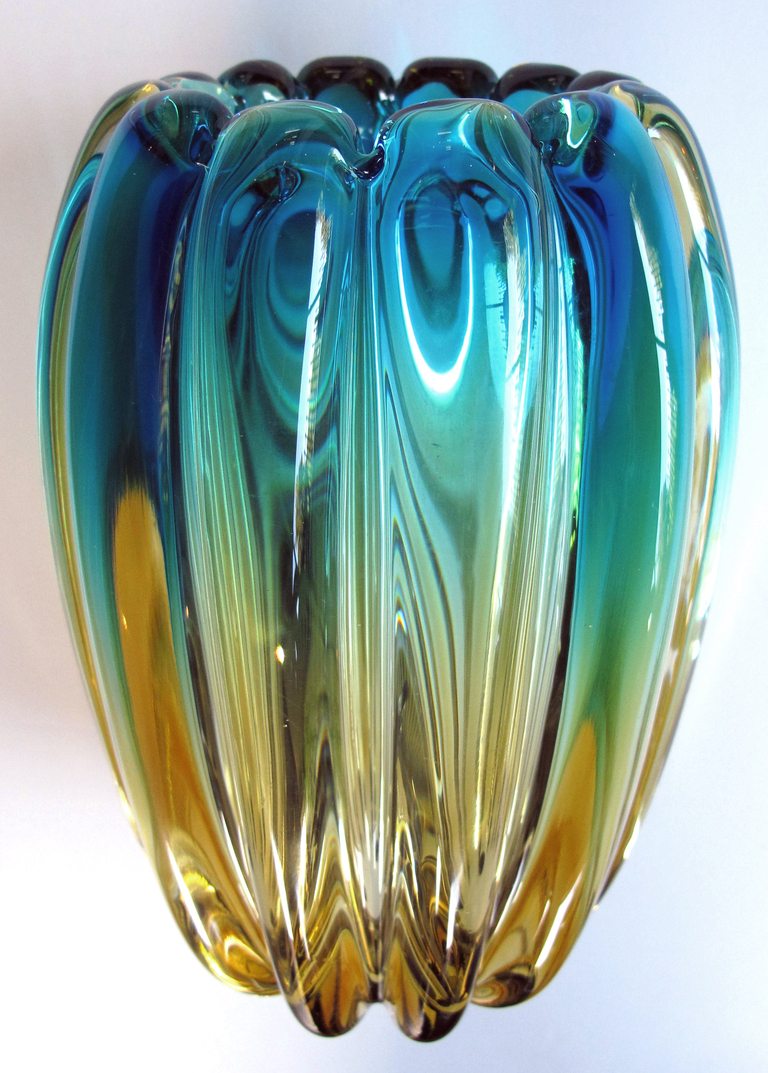
Murano: Getting the Full Experience
If you have the funds to spare, one of the best ways to recognise and appreciate authentic Italian art glass is through taking one of the many available custom tours of the island’s glassworks. Seguso, for example, opens its hallowed doors—which have seen the passage of 23 generations of artisans, starting in 1397—to visitors through its “Night in the Furnace” dinner events and “Glass Experience” tours, which allow up to six guests (at a rate of about £130 – £200 per person or $200 to $300 USD per person) to witness every aspect of the glassmaking process, thereby learning first-hand what separates the wheat from the chaff.

